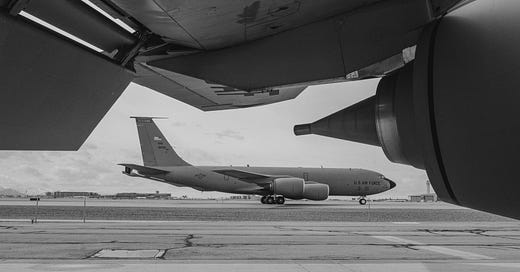National Defense Digest: Allies, Adversaries, and Aftershocks
Digest recapping the pressing national defense news.
Every Monday morning, William Posey (UATX ‘28) will bring you a quick breakdown of the biggest national defense stories from the past week. The goal is to give you insights into US foreign policy and the state of geopolitics.
Posey is the co-chair of the UATX Institute for National Security which connects students with experts in US grand strategy and facilitates student success in that field.
Thanks for reading and stay tuned for more each week!
Israel - Iran Ceasefire
On the evening of June 23, President Donald Trump announced that a ceasefire had been brokered between Israel and Iran, which Iran confirmed while Israel initially did not. Shortly before the ceasefire went into effect, an Iranian missile barrage struck southern Israel, killing four in a residential building in Beersheba. Several hours later, Israel responded by bombing Tehran. The following morning, President Trump expressed displeasure with both nations for their behavior, but fortunately, since then, the ceasefire has been maintained. The conflict resulted in the deaths of over 600 Iranian civilians and dozens of military officials, along with 27 Israeli civilians and one Israeli soldier.NATO Summit
From June 25-26, NATO leaders met at a summit hosted in The Hague, Netherlands. The 32 leaders established a new defense spending commitment of 5% of annual GDP, an increase from the previous threshold of 2%. The most notable aspect of the summit was President Trump’s unexpectedly positive approach to the alliance, marking a sharp departure from some of his previous rhetoric that had questioned the utility of NATO membership for the United States. Ukrainian President Volodymyr Zelensky also made an appearance, notably having exchanged his typical casual attire for a black suit. The 2026 NATO summit is scheduled to be hosted in Turkey.
Protests in Serbia
On June 28, a massive student-led antigovernment protest, estimated to number 140,000 demonstrators, swept across Serbia’s capital city, Belgrade. Serbian authorities arrested 77 protestors, whom President Aleksandar Vucic accused of terror and inciting violence. The protest is one of the largest in an series of demonstrations that began in November. The first protest was prompted by the collapse of a train station roof that killed 16 people, which many saw as a symptom of government corruption and incompetence.
Russia-Ukraine War Drags On
On the night of June 28, Russia conducted what Ukrainian officials say was the largest aerial assault of the war, launching hundreds of drones, missiles, and decoys at targets across the country. Most of the projectiles were intercepted, but a total of nine Ukrainians were killed across various regions of the country. The strikes follow a series of Ukrainian attacks on Russian military and industrial centers in southwestern Russia and Crimea that lasted from June 26 to 28. The attacks come amidst a sustained period of negotiations between the two nations that led to exchanges of prisoners and war dead earlier this month.





